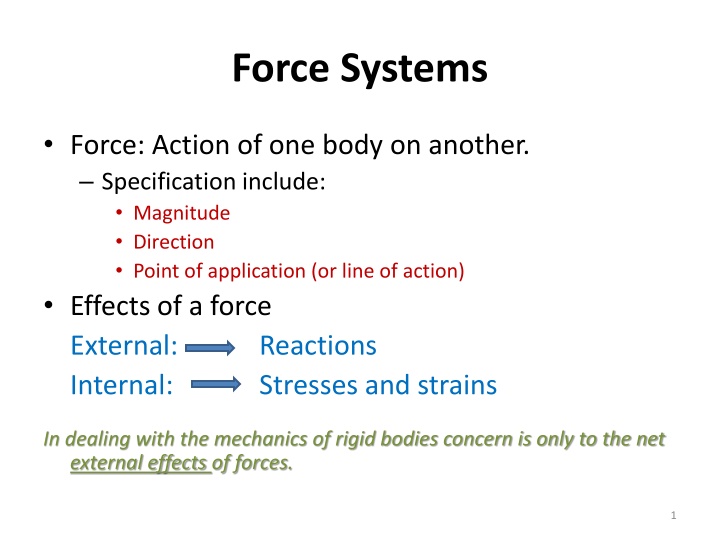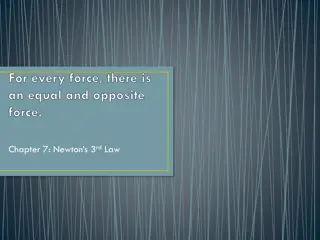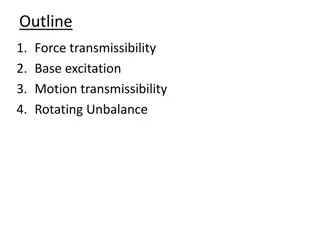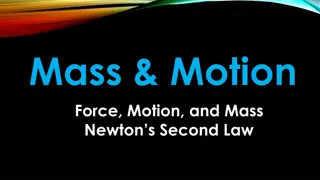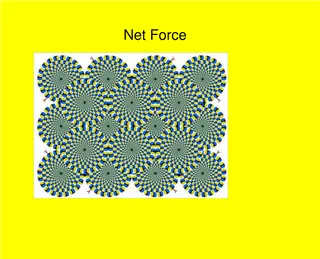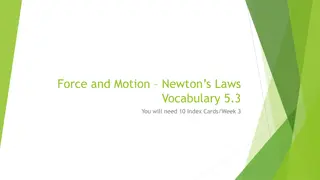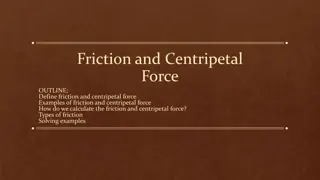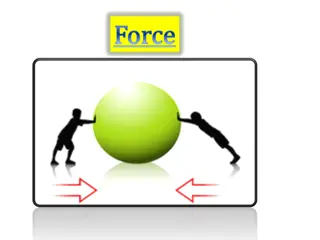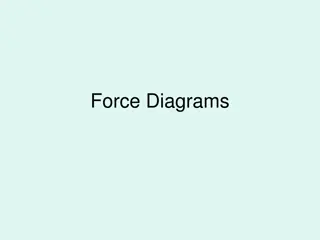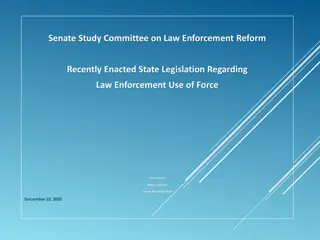Force Systems and Components
Force systems involve the action of one body on another, specifying the magnitude, direction, and point of application of forces. Explore topics like forces, internal and external effects, and laws of sines and cosines in mechanics.
Download Presentation

Please find below an Image/Link to download the presentation.
The content on the website is provided AS IS for your information and personal use only. It may not be sold, licensed, or shared on other websites without obtaining consent from the author.If you encounter any issues during the download, it is possible that the publisher has removed the file from their server.
You are allowed to download the files provided on this website for personal or commercial use, subject to the condition that they are used lawfully. All files are the property of their respective owners.
The content on the website is provided AS IS for your information and personal use only. It may not be sold, licensed, or shared on other websites without obtaining consent from the author.
E N D
Presentation Transcript
Force Systems Force: Action of one body on another. Specification include: Magnitude Direction Point of application (or line of action) Effects of a force External: Reactions Internal: Stresses and strains In dealing with the mechanics of rigid bodies concern is only to the net external effects of forces. 1
CHAPTER 2 FORCE SYSTEMS (RECTANGULAR COMPONENTS)
Law of sines and cosines Law of sines Law of cosines B B c a c a C D A C D A b b a b c = + 2 2 2 2 cos c a b ab 2 C = = sin sin sin A B C = + + 2 2 2 cos c a b ab D March 2, 2025 GE 201: Dr. Fahed Alrshoudi 3
Problem-1 The force magnitude a has of 600 Express N. as a vector in terms of the F F unit vecto rs and Identify t . he and x scalar y components of . i j F y = 600 F N 0 30 x 3/2/2025 4
Solution y = 0 600 sin 30 ( ) F i x = 600 F N = 0 600 cos 30 F = 0 600 cos 30 F j y y 0 30 = + F F F x y = 300 + 520 F i j N x = 0 600 sin 30 x F 3/2/2025 5
CHAPTER 2 FORCE SYSTEMS EXAMPLE - 1
Problem-2 Determine the magnitude of the resultant R of the two forces (shown below), and the angle which R makes with the positive x- axis. 1= T 7 kN 2= T 5 kN O 0 45 0 15 x 3/2/2025 7
Solution This problem can be viewed how two non-rectangular force components can be replaced by a single resultant force R. 2= T 5 kN 0 15 R 0 45 1= T 7 kN = + 2 2 2 Use cosine law : 2 cos c a b ab C 0 45 5 kN = + + 2 2 0 0 2 cos( 45 15 ) R T T T T 0 15 1 2 1 2 x = + + 2 2 0 0 1= T 7 5 2 5 7 cos( 45 15 ) 7 kN = . 6 24 kN 2= T 5 kN O + + 0 0 0 0 sin T sin( 45 15 ) sin( 45 15 ) = = sin T 2 0 0 45 R R 15 x 2 0 sin( 60 ) = = = = 1 . 0 ( 0 sin 5 6939 . 0 sin 6939 ) 43 9 . . 6 24 = = + + = 0 0 0 0 45 43 9 . 45 88 9 . 3/2/2025 8
Alternative Solution Note: This method will be discussed in ForceResultants topic. = = = = 0 0 0 0 cos 45 cos 15 7 cos 45 5 cos 15 . 0 12 kN R F T T 1 2 x x = = + = + = 0 0 0 0 sin 45 sin 15 7 sin 45 5 sin 15 . 6 24 kN R F T T 1 2 y y = + = + = 2 x 2 y 2 2 . 0 12 . 6 24 . 6 24 kN R R R 1= T 7 kN 2= T 5 kN R . 6 24 y = = = 1 1 0 tan tan 88 9 . O . 0 12 R x 0 0 45 15 x 3/2/2025 9
CHAPTER 2 FORCE SYSTEMS EXAMPLE - 2
CHAPTER 2 FORCE SYSTEMS EXAMPLE 2 (CONTINUED)
